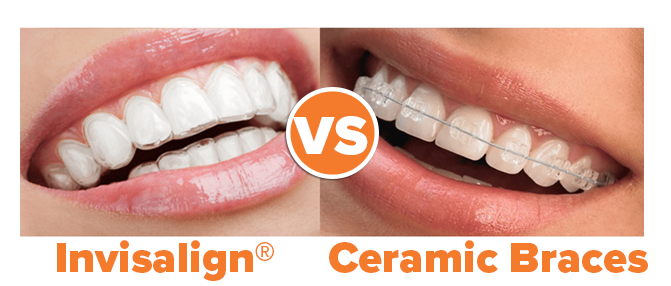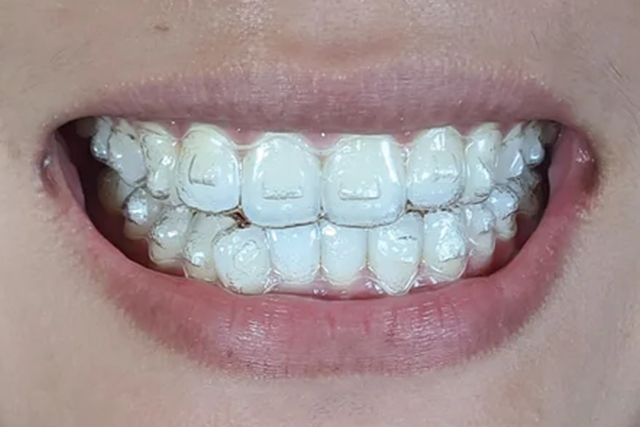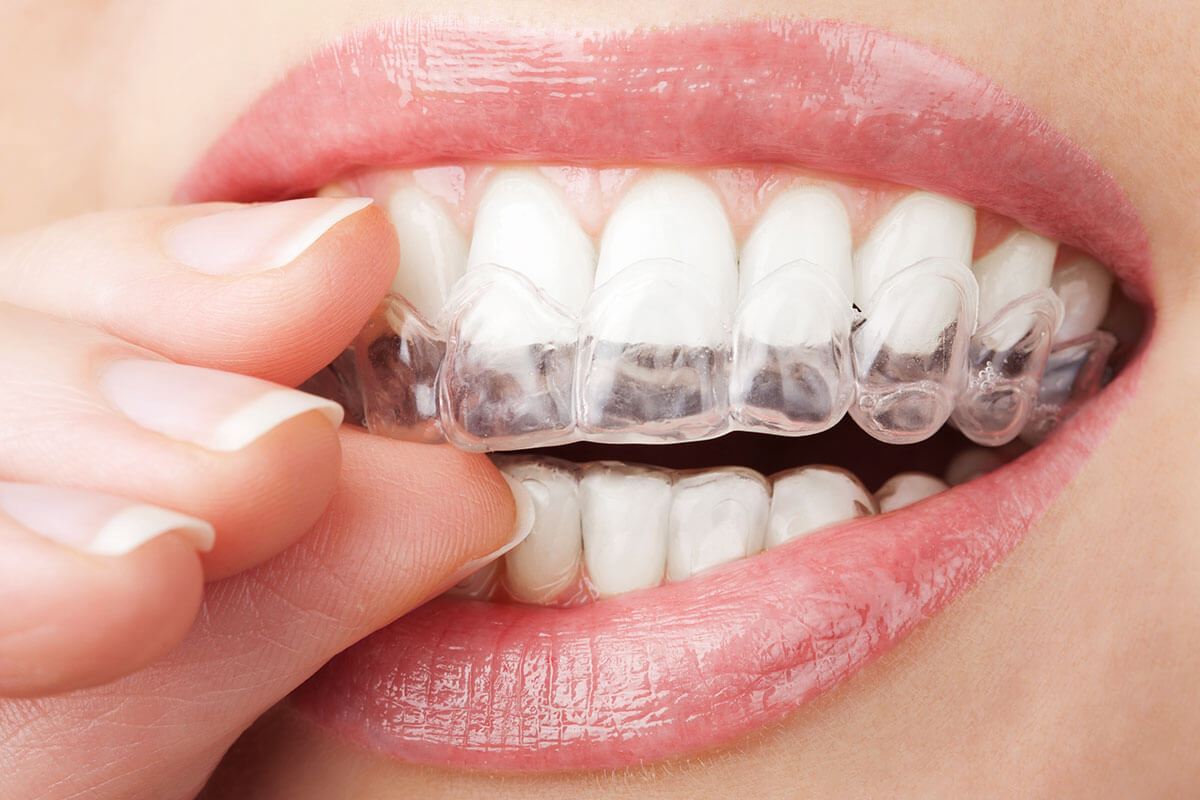Invisalign for Teens: A Modern Solution to Straightening Young Smiles
Invisalign for Teens: A Modern Solution to Straightening Young Smiles
Blog Article
Invisalign vs. Typical Dental braces: Which Option Is Right for You?
When considering orthodontic treatment, the choice between Invisalign and standard dental braces offers several crucial variables that warrant careful evaluation. Invisalign provides a discreet choice with removable aligners, while standard dental braces give a more visible yet effective option for serious imbalance. Each choice includes unique benefits and downsides related to looks, convenience, therapy duration, and expense. Comprehending these subtleties is crucial for making an informed choice that aligns with your personal preferences and lifestyle. The question continues to be: which alternative will ideal fulfill your orthodontic requirements and assumptions?
Review of Treatment Choices

In contrast, typical braces contain steel brackets and cables that are bound to the teeth. This method applies continual stress gradually to achieve positioning. While reliable for intricate orthodontic issues, conventional dental braces require routine visits for modifications and can present obstacles in maintaining oral hygiene as a result of the difficulty of cleaning around brackets and cables.
Both options have their values, and the selection often depends upon particular dental conditions, way of living choices, and patient conformity. Ultimately, speaking with an orthodontic expert is vital for establishing the most suitable treatment plan tailored to specific needs. Understanding the nuances of each alternative can considerably influence the general success of orthodontic therapy.
Visual Factors To Consider
A substantial aspect influencing the selection between Invisalign and conventional dental braces is the visual appeal each therapy offers. Invisalign aligners are crafted from clear plastic, making them basically unseen when put on.
In comparison, traditional braces include steel braces and wires, which can be extra obvious. While advancements in orthodontic technology have actually led to the growth of smaller braces and tinted elastics, standard braces still keep a more noticeable profile. For some individuals, the presence of braces may discourage them from looking for required therapy.
Ultimately, the option in between Invisalign and traditional braces might rest on individual choices concerning aesthetic appeals. People who focus on discretion usually favor Invisalign, while those who are much less worried about exposure might opt for conventional braces. Comprehending the visual effects of each option is vital for making an educated decision that aligns with one's way of life and choices.
Convenience and Convenience

In terms of benefit, Invisalign aligners are removable, making it possible for individuals to enjoy their favorite foods without constraint and keep optimum dental hygiene. Brushing and flossing are simplified, as the aligners can be taken out throughout these regimens, whereas traditional dental braces need careful steering around brackets and cords.
In comparison, conventional dental braces necessitate routine changes, making them less hassle-free for those with busy routines. On the whole, the convenience and comfort of Invisalign make it an attractive choice for lots of individuals seeking orthodontic therapy.
Treatment Duration and Effectiveness
While both Invisalign and conventional dental braces work in dealing with oral misalignments, the duration of therapy can differ considerably in between both alternatives. Normally, Invisalign treatment can take anywhere from 12 to 18 months, relying on the intricacy of the situation. The clear aligners work by gradually changing teeth into their wanted settings, and normal follow-ups with an orthodontist aid make certain progress continues to be on track.
On the other hand, typical dental braces frequently content require a longer dedication, generally ranging from 18 months to 3 years. This is because of their set nature and using braces and wires, which can be much more effective for serious misalignments and complex cases (Invisalign). The therapy performance of typical dental braces is well-documented, as they permit for specific changes and higher control over tooth motion
Inevitably, the selection in between Invisalign and standard braces may rest on both the awaited therapy duration and the particular dental issues handy. Consulting with an orthodontist is crucial, as they can provide customized suggestions based on individual demands, ensuring the picked approach lines up with desired timeframes and end results.
Price Comparison and Insurance Alternatives
Expense plays a considerable role in the decision-making process for people taking into consideration orthodontic treatment, whether selecting Invisalign or typical braces. Typically, the expense of Invisalign ranges from $3,000 to $8,000, while traditional dental braces normally cost in between $2,000 and $6,000. Elements affecting these expenses consist of the complexity of the case, the period of treatment, and geographical place.
Lots of oral insurance plans supply partial coverage for orthodontic treatments, yet the specifics can differ widely. Typically, standard dental braces might be more regularly covered by insurance plans compared to Invisalign, which some insurance companies classify as an aesthetic treatment.
Additionally, several orthodontic methods supply adaptable payment plans, making both treatment options more easily accessible. Individuals need to ask about possible financing options and price cuts for upfront payments. Reviewing the complete price, consisting of insurance policy advantages and repayment strategies, is vital for making a notified choice that lines up with both aesthetic preferences and budget factors to consider.

Conclusion
In recap, the selection in between Invisalign and standard braces hinges on several aspects, including aesthetic preferences, convenience, therapy duration, and cost. Invisalign offers a very discreet, detachable choice that assists in oral health and nutritional versatility, while conventional braces may be preferable for complex oral problems and typically come at a reduced cost point. Ultimately, consultation with an orthodontist see this website is important to analyze private situations and determine one of the most suitable therapy choice for achieving optimal oral alignment.
When taking into consideration orthodontic treatment, the choice in between Invisalign and traditional dental braces presents numerous crucial factors that warrant careful analysis.Comparing Invisalign and typical braces discloses unique therapy choices for orthodontic correction.While both Invisalign and standard dental braces are efficient in dealing with dental imbalances, the duration of treatment can differ dramatically between the 2 alternatives.Cost plays a substantial role in the decision-making process for people considering orthodontic therapy, whether opting for Invisalign or conventional braces.In recap, the choice between Invisalign and standard dental braces hinges on numerous factors, including visual choices, comfort, treatment period, and price.
Report this page